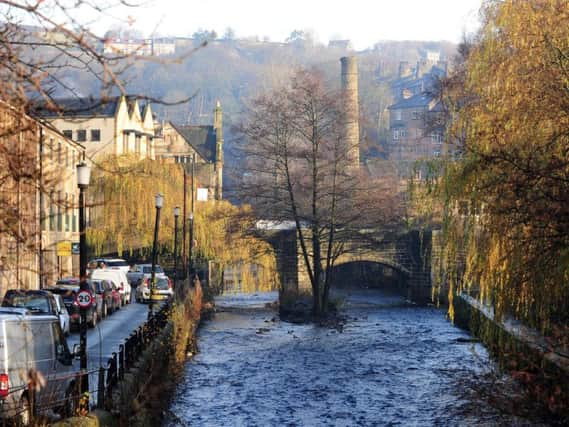Why large landowners could be key in fight against Calderdale's floods


Engagement in flood management of those owning or managing large tracts of land above the Calder Valley will help complete the map of risks and what can be done to alleviate them in case of a major event, members of Calderdale Flood Recovery and Resilience Programme Board heard.
The board, which is made up of Calderdale Council councillors and officers and staff from partner organisations such as the Environment Agency, will begin work on schemes to protect Hebden Bridge next year, and Mytholmroyd works are ongoing.
Advertisement
Hide AdAdvertisement
Hide AdSome large landowners, including the National Trust and Yorkshire Water, were already engaged with the process and progress has been made particularly with small landowners through the Calderdale Natural Flood Management Grant Scheme and other funding sources.
“However, engagement by different partners has not always been joined up, allowing gaps and overlaps to develop.
“Addressing this is critical to the success of implementing Natural Flood management measures across Calderdale,” said the council’s Natural Flood Management project officer Rosie Holdsworth in her report to the board.
She reported that the NFM Grant Scheme had worked well with small landowners but was less relevant to landowners with large estates.
Advertisement
Hide AdAdvertisement
Hide Ad“Much of this land is held by private individuals or commoners’ groups.
“However only one moorland owner responded to the NFM Grant Scheme and ultimately withdrew their application as the scheme wasn’t ideally suited to the landowner’s situation.
“Representation of large upland landowners on the Natural Flood Management Operations Group (NFMOG) is very limited and as a result those landowners may perceive the group as being closed to them,” it said.
The group is being charged with developing a draft strategy to engage large landowners, including a representative on the group from the shooting and gamekeeping community – other than the council, NT and YW, the major upland landowners are private organisations at Midgley and Warley Moors and at Walshaw Moor, which are both grouse moors and rough grazing moorland spaces.
Advertisement
Hide AdAdvertisement
Hide AdReporting to the board, Anthony Rae, co-ordinator of Calderdale Friends of the Earth said both the board and the public needed to know engagement was taking place.
He suggested a published matrix would allow the board to use it as a management tool to see how that component fitted with overall flood alleviation schemes.
The public needed to know action had been taken where there were risks.
“Can we start the process now and get those questions answered?” he said.
Advertisement
Hide AdAdvertisement
Hide AdCoun Barry Collins (Lab, Illingworth and Mixenden), chairing the meeting, said: “It’s clear from this we have had conversations with one of the owners and he’s very receptive to the idea.
“We haven’t been able to contact Walshaw Estate – I don’t know if there have been discussions prior to this point?”
A council officer said they had spoken with Walshaw’s head gamekeeper and a meeting with the land agent was scheduled for January – “the wheels are in motion.”
Mr Rae said after the meeting: “The questions we have been asking about major landowner engagement in the flood response process over the last three years have been an attempt to allay a sense of suspicion or confrontation about those activities.
Advertisement
Hide AdAdvertisement
Hide Ad“A more systematic process will allow the Flood Board to reduce flood risks arising in the uplands, increase public confidence that activities there in the uplands are not increasing flood risk and allow all landowners to emulate the excellent contributions already made by Yorkshire Water and the National Trust.”